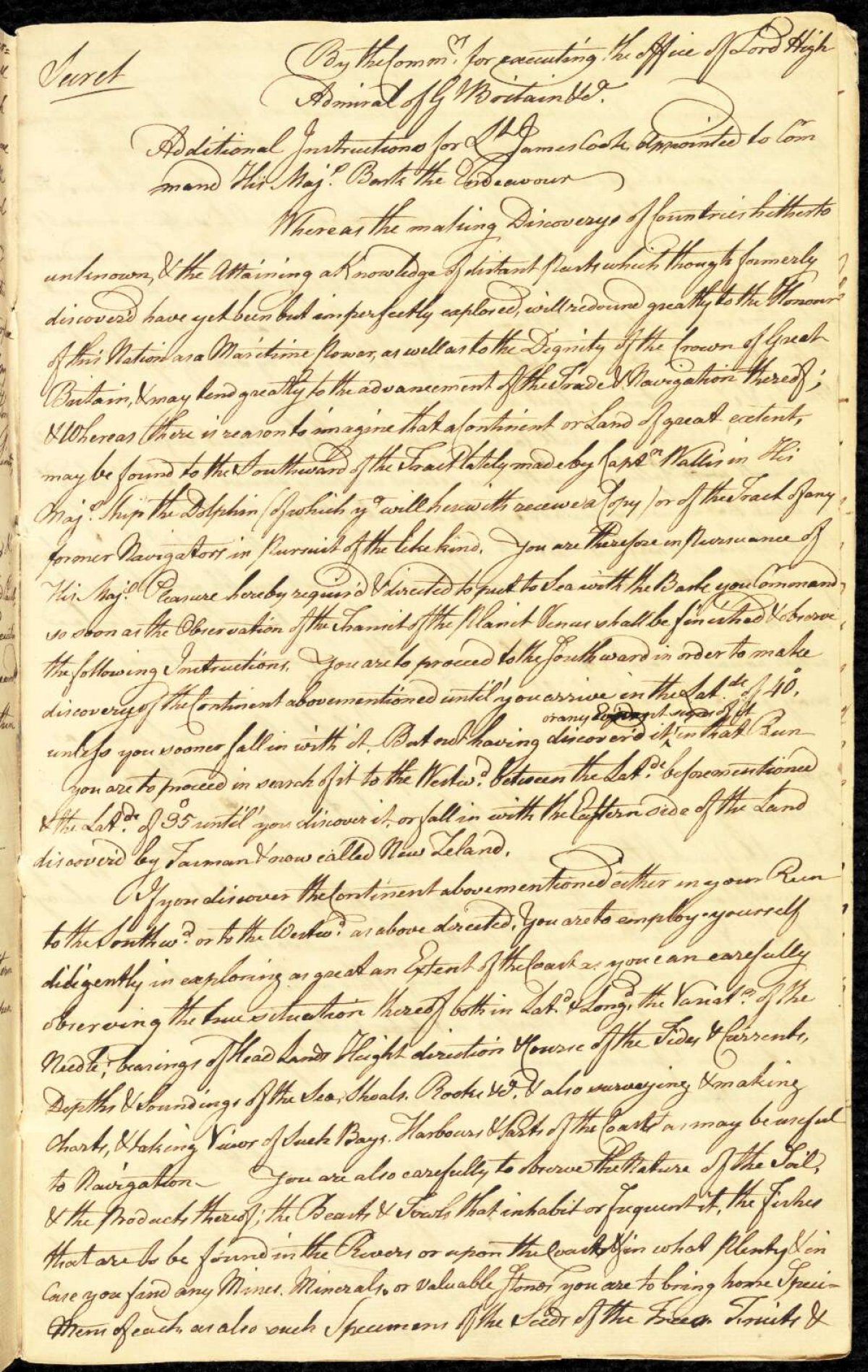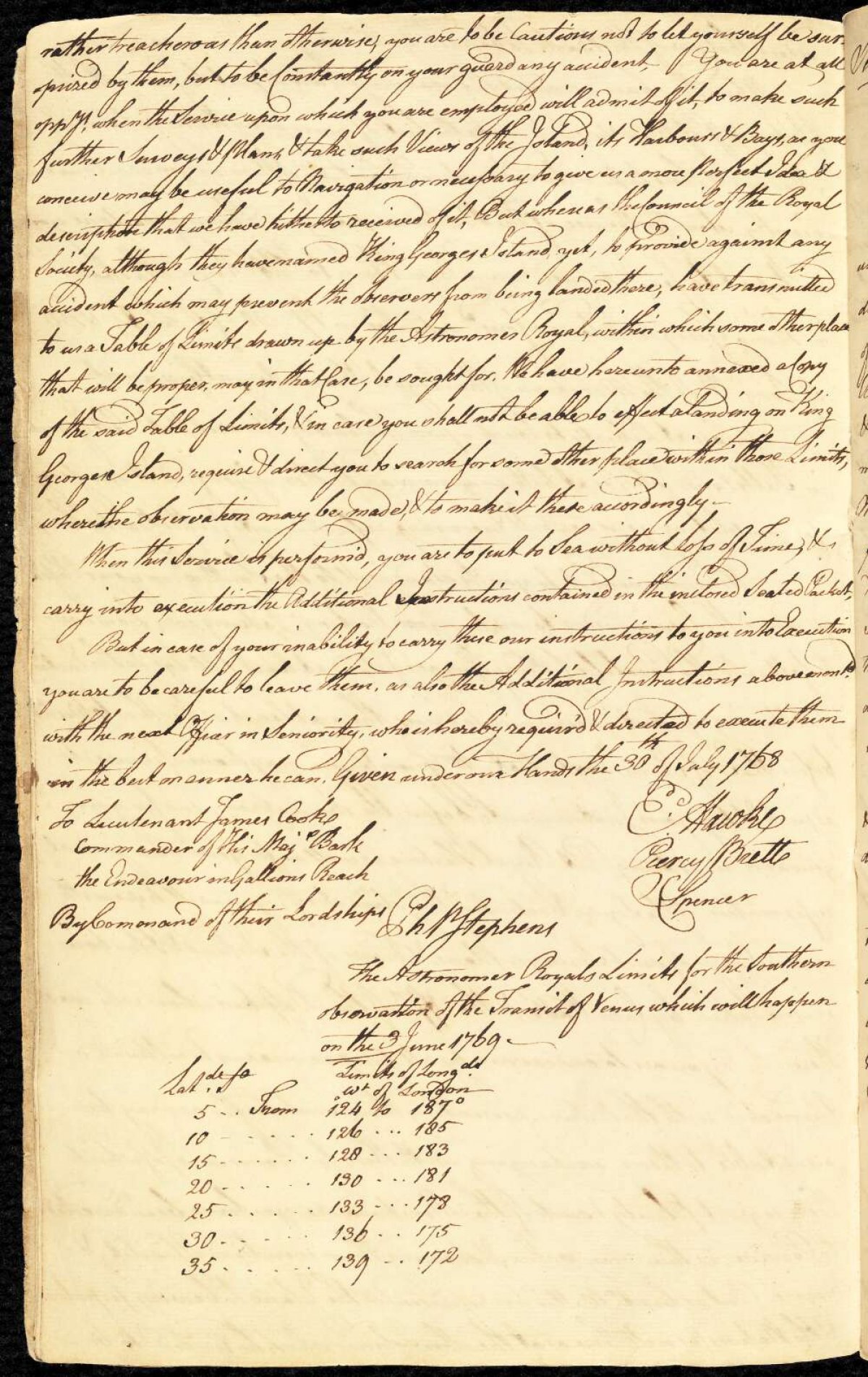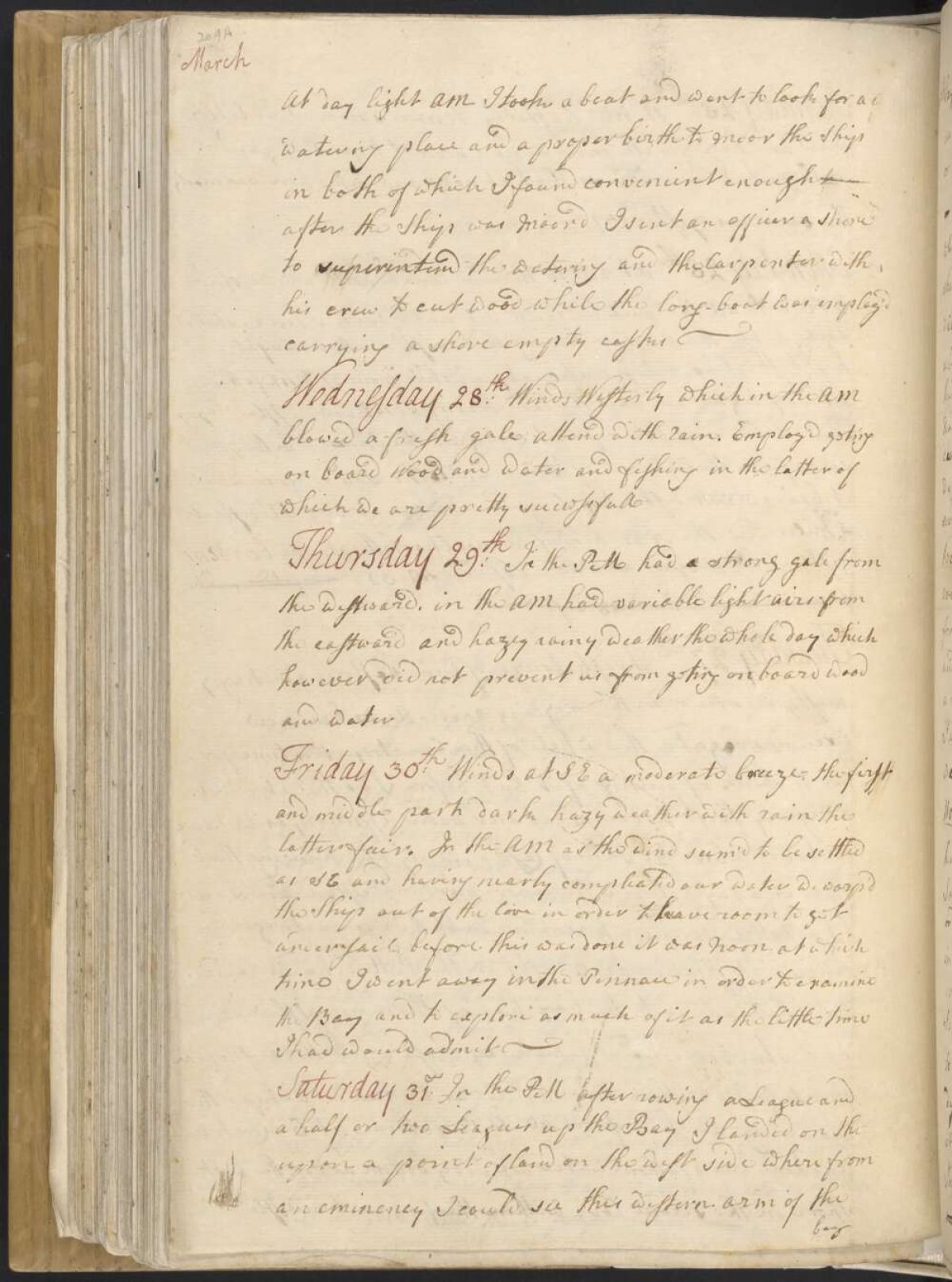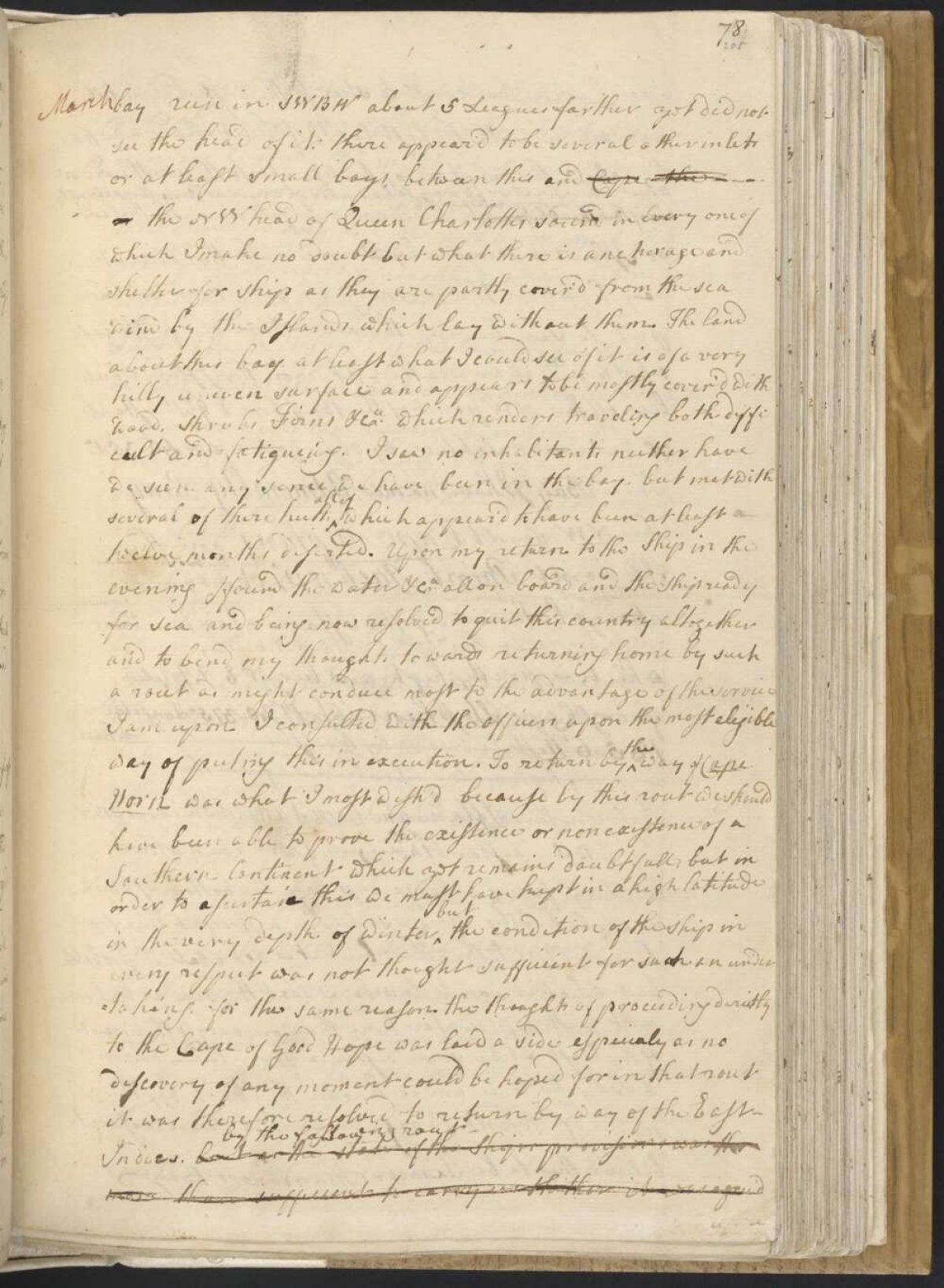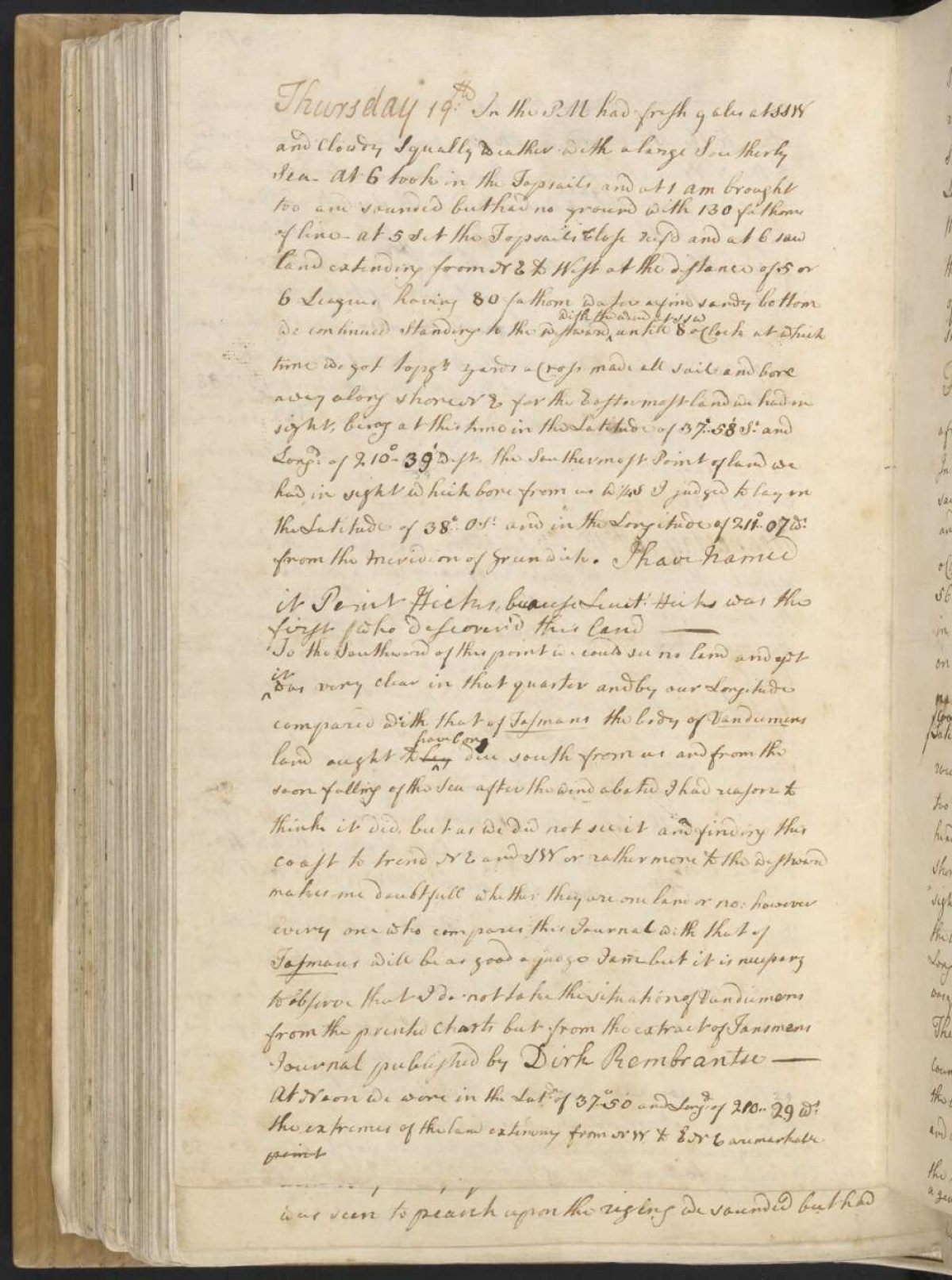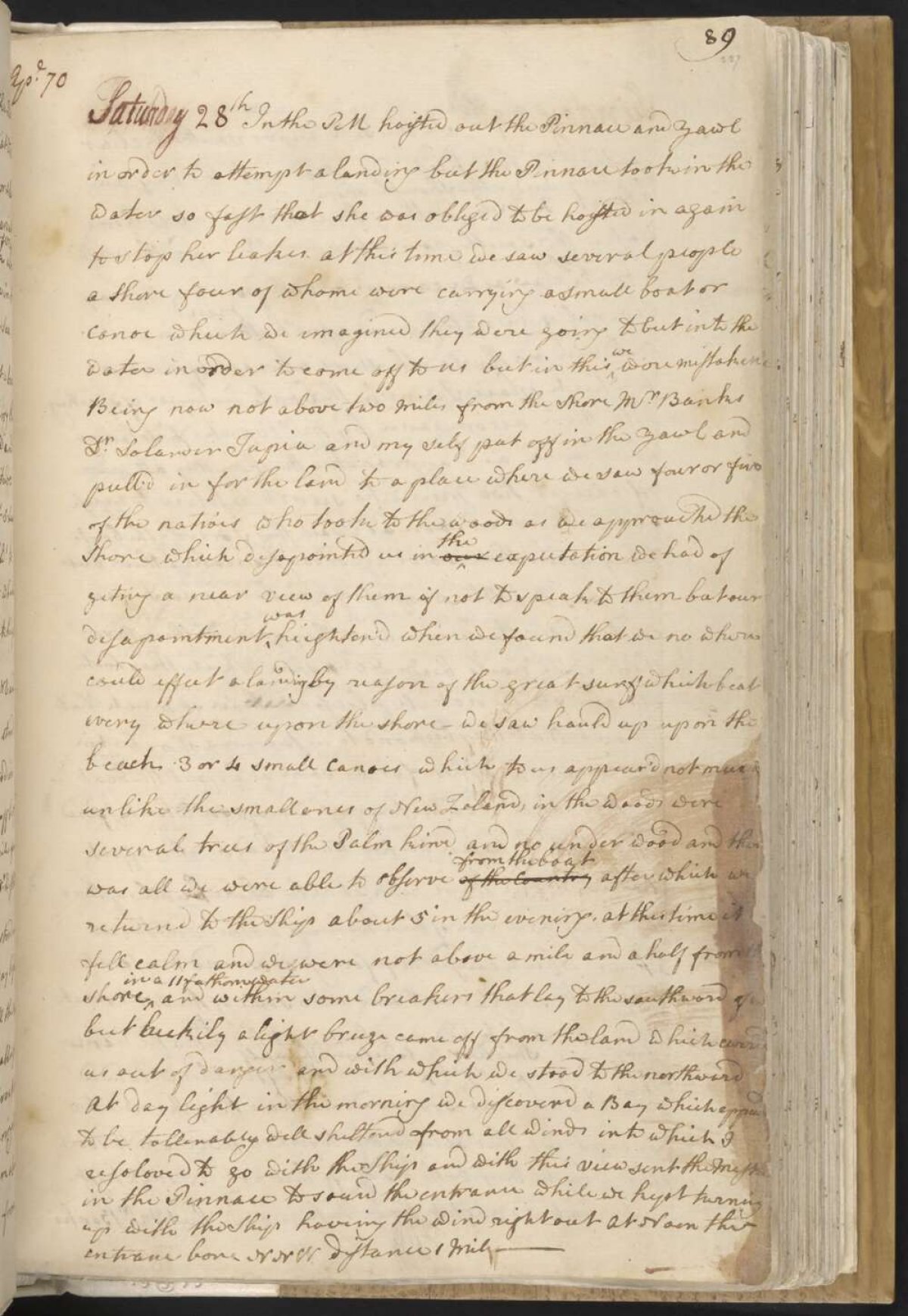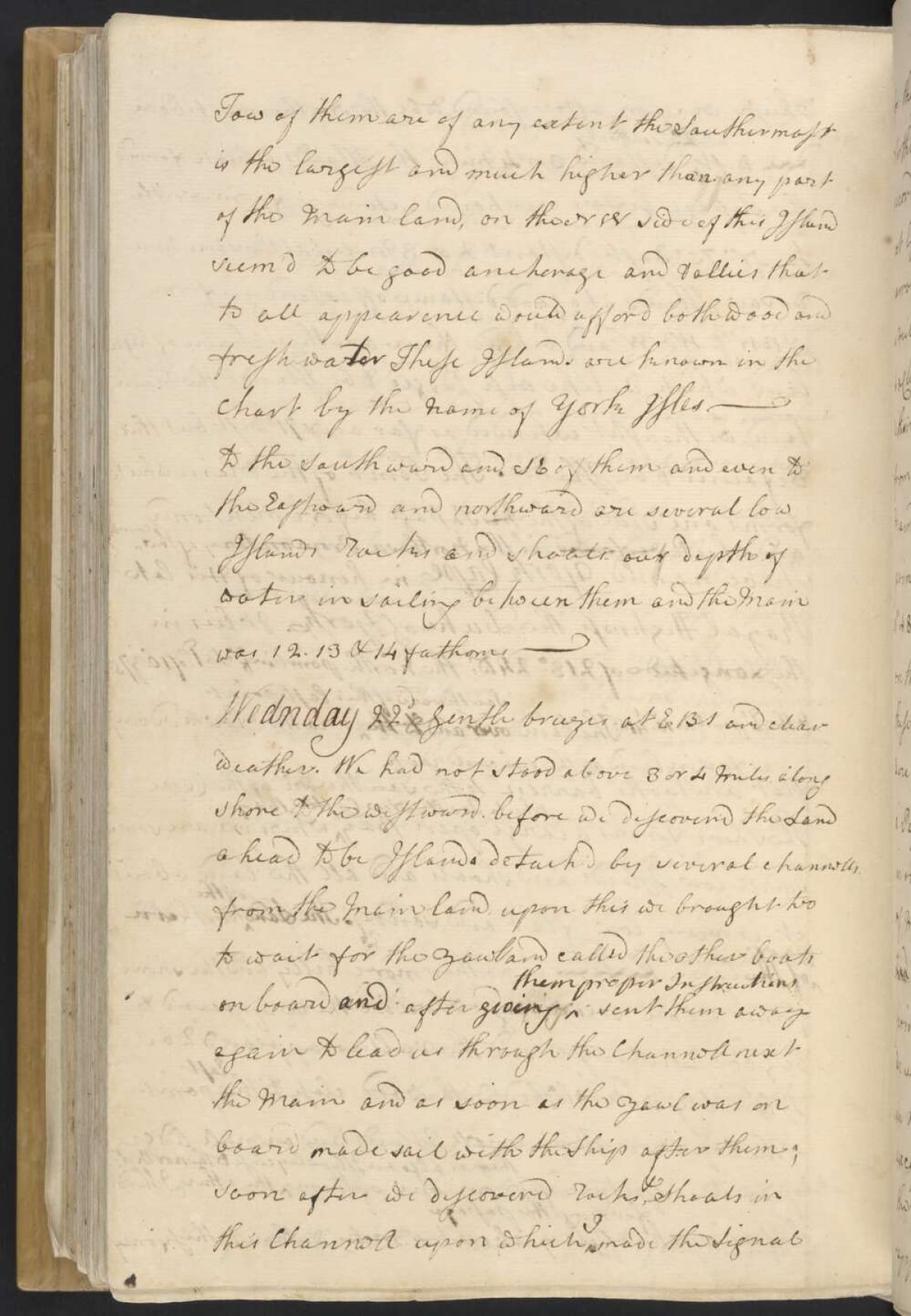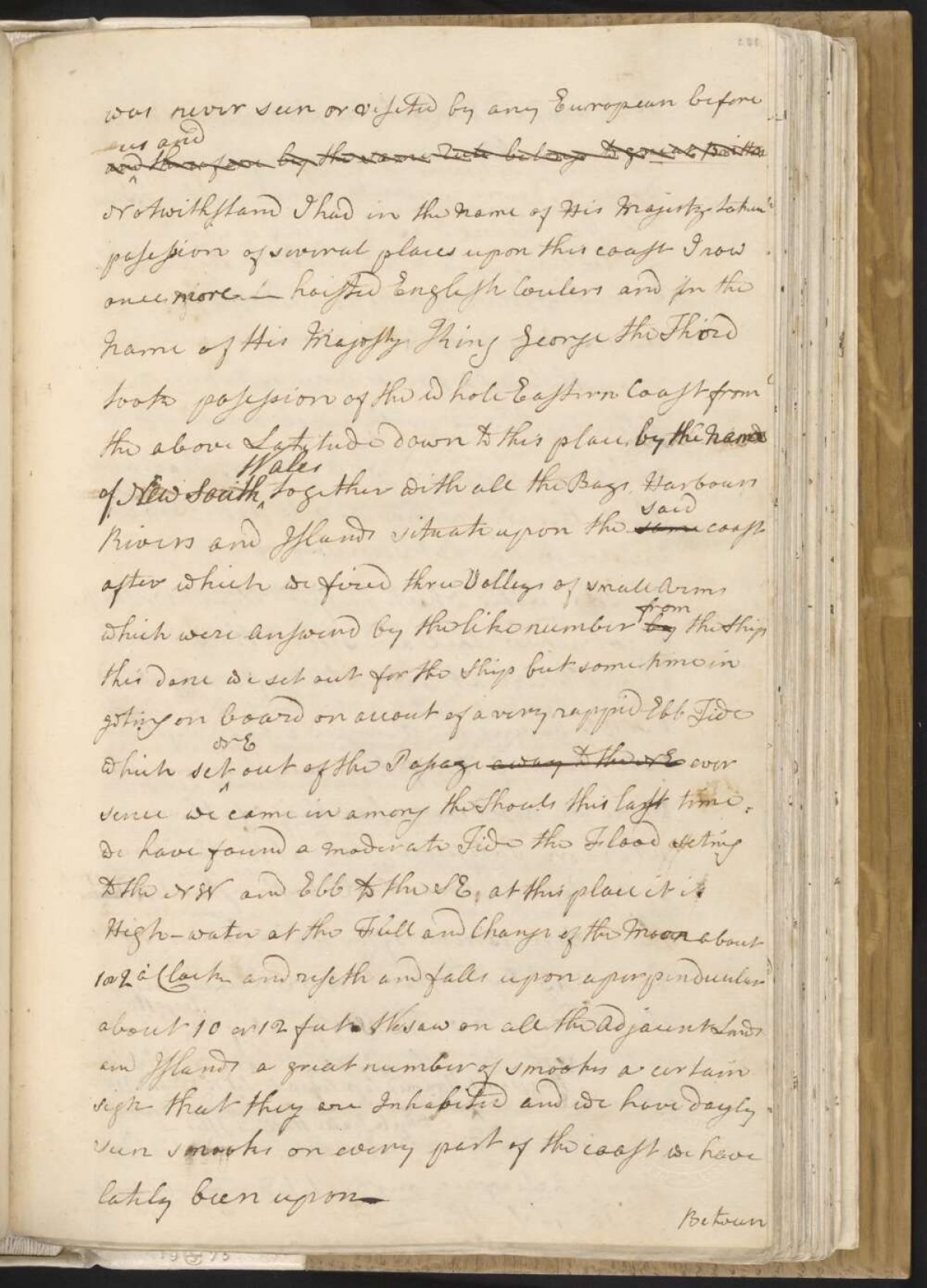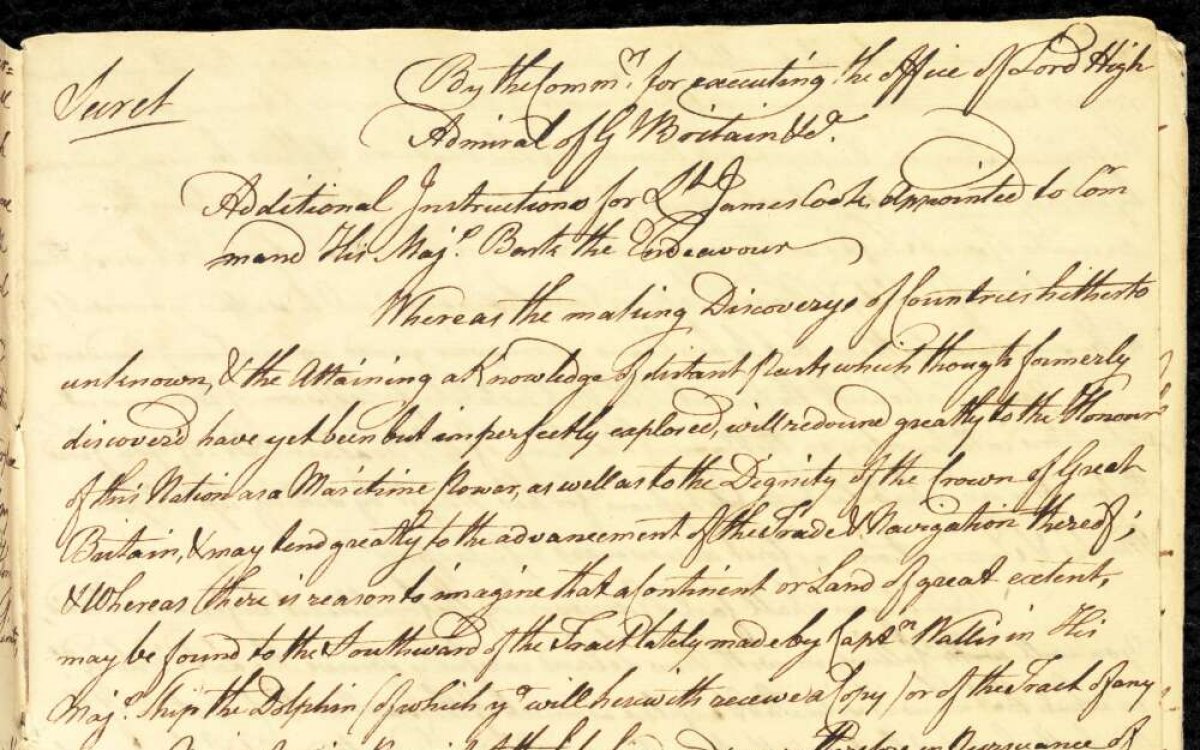
Cook, James, 1728-1779 & Great Britain. Admiralty. (1768). Cook's voyage 1768-71 [manuscript] : copies of correspondence, etc. http://nla.gov.au/nla.obj-229102048
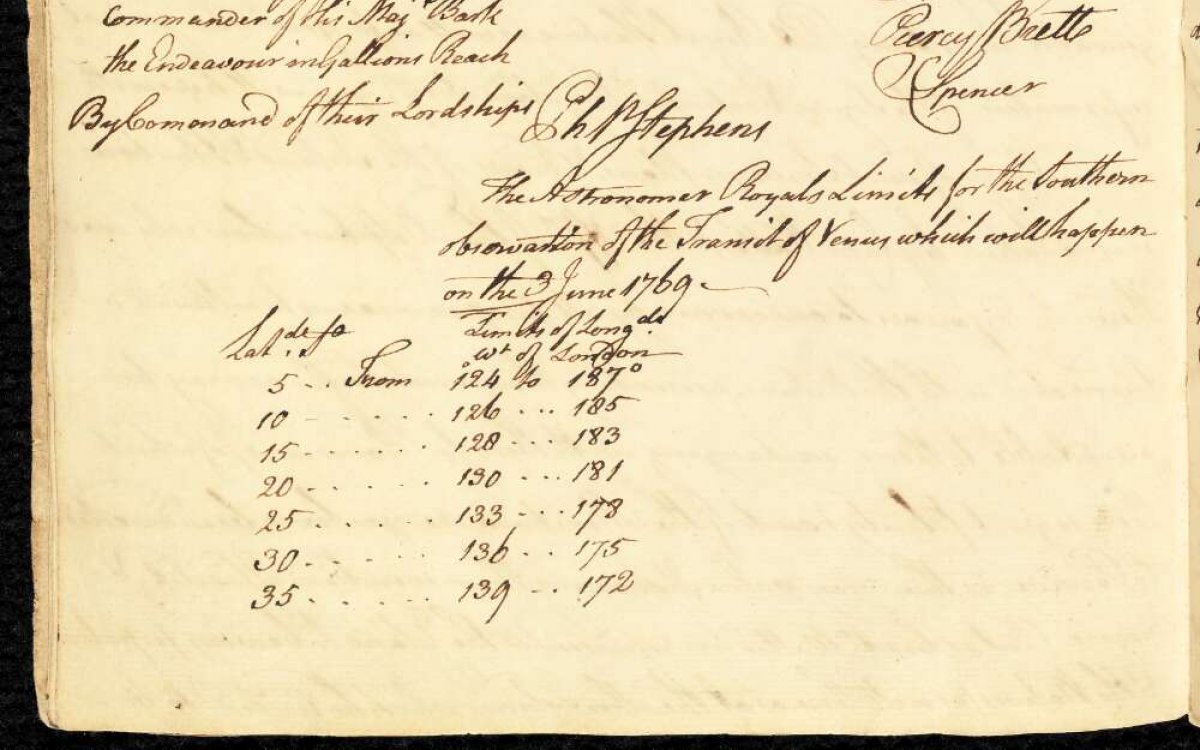
Cook, James, 1728-1779 & Great Britain. Admiralty. (1768). Cook's voyage 1768-71 [manuscript] : copies of correspondence, etc. http://nla.gov.au/nla.obj-229102048
Before sailing from England, Cook had been handed a series of secret instructions by the Admiralty. After each mission was complete, he was to open the next envelope. Their scientific research done, Cook and his crew left Tahiti. On leaving Tahiti, Cook opened the next set of instructions. They read:
there is reason to imagine that a Continent or Land of great extent, may be found to the Southward of the Tract lately made by Captn Wallis in His Majesty’s Ship the Dolphin … so soon as the Observation of the Transit of the Planet Venus shall be finished and observe the following Instructions. You are to proceed to the Southward in order to make discovery of the Continent abovementioned until you arrive in the Latitude of 40°, unless you sooner fall in with it. But not having discover’d it or any Evident sign of it in that Run you are to proceed in search of it to the Westward between the Latitude beforementioned and the Latitude of 35° until you discover it, or fall in with the Eastern side of the Land discover’d by Tasman and now called New Zeland.
Cook’s new instructions were to sail south from Tahiti in search of a new continent. Australia was sometimes referred to as Terra Australis Incognita, meaning Unknown Southern Land. However, Cook and his contemporaries were already aware of Australia’s existence. Europeans knew the location of New Holland (as Australia was then known) at this time, although only the western coast had been mapped. The existence of New Zealand was also known to explorers and navigators. Nevertheless, Europeans were still searching for another, larger Terra Australis Incognita.
In his diary entry for 31 March 1770 Cook wrote that:
To return by the way of Cape Horn was what I most wish’d because by this rout we should have been able to prove the existence or non existence of a Southern Continent which yet remains doubtfull … but the condition of the ship in every respect was not thought sufficient for such an undertaking.
Instead, he decided to:
Return by way of the East Indies by the following rout—upon leaving this coast to steer to the westward untill we fall in with the East Coast of New Holland and than to follow the deriction of that Coast to the northward or what other direction it might take untill we arrive at its northern extremity and if this should be found impractical than to endeavour to fall in with the lands or Islands discover’d by Quiros [i.e. Papua New Guinea].
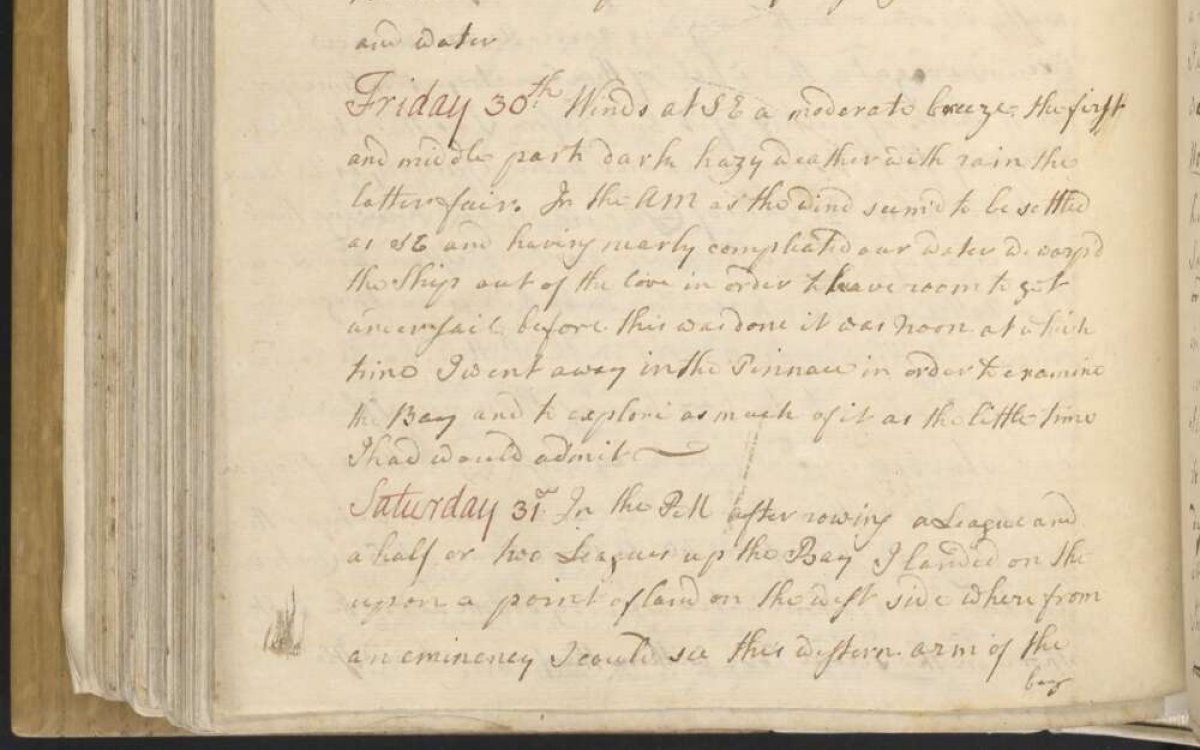
Cook, James, 1728-1779 & Hutchinson, John & Wallis, Samuel, 1728-1795 & Bolckow, Henry William Ferdinand, 1806-1878. (1768). Journal of H.M.S. Endeavour, 1768-1771 [manuscript]. http://nla.gov.au/nla.obj-228958440
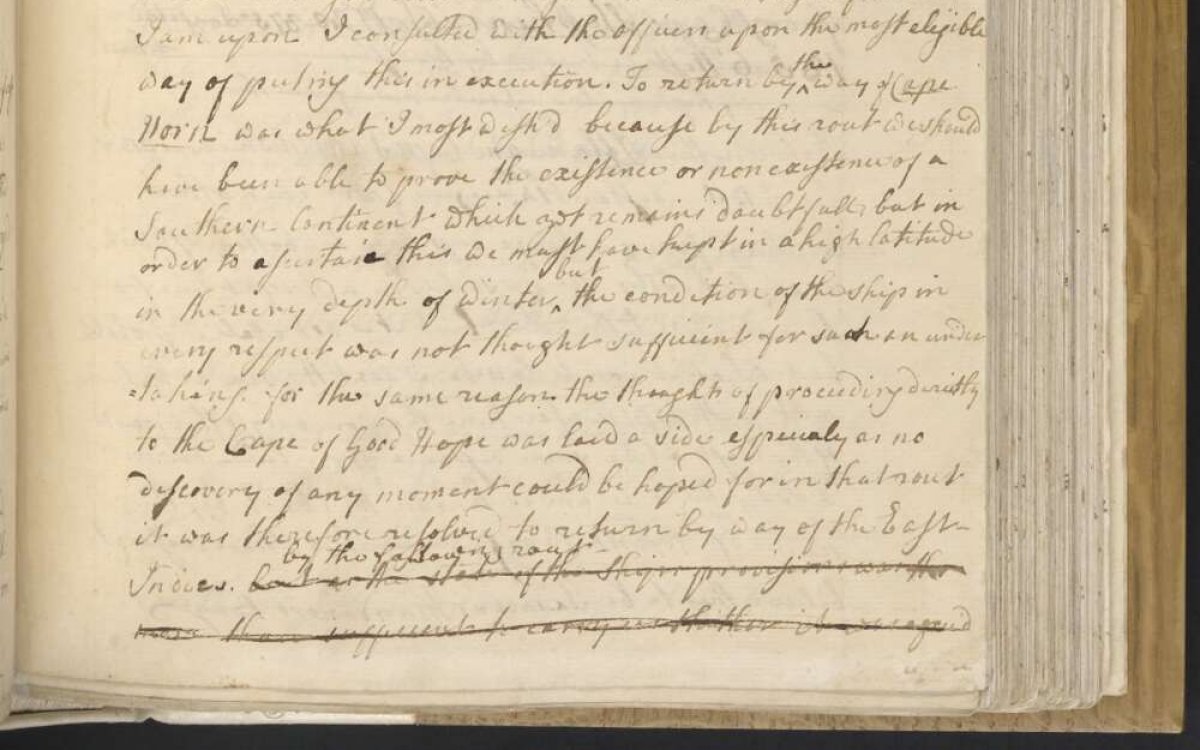
Cook, James, 1728-1779 & Hutchinson, John & Wallis, Samuel, 1728-1795 & Bolckow, Henry William Ferdinand, 1806-1878. (1768). Journal of H.M.S. Endeavour, 1768-1771 [manuscript]. http://nla.gov.au/nla.obj-228958440
As Cook and his men proceeded west, they stopped in New Zealand. Here they spent 6 months mapping the coasts of both islands in detail. This proved that New Zealand was not part of the postulated southern landmass.
They continued westward, eventually sighting land at Point Hicks on 19 April 1770. From this point, in modern-day Victoria, Cook and his men sailed up the coast to the tip of Queensland, mapping the coast as they went. Along their journey, Cook and his crew recorded their observations in journals, sketched people, plants and animals, painted landscapes, and collected artefacts and specimens. They had many interactions with Indigenous peoples. Find out more in our module Cook: The Indigenous Experience.
Journal Entries
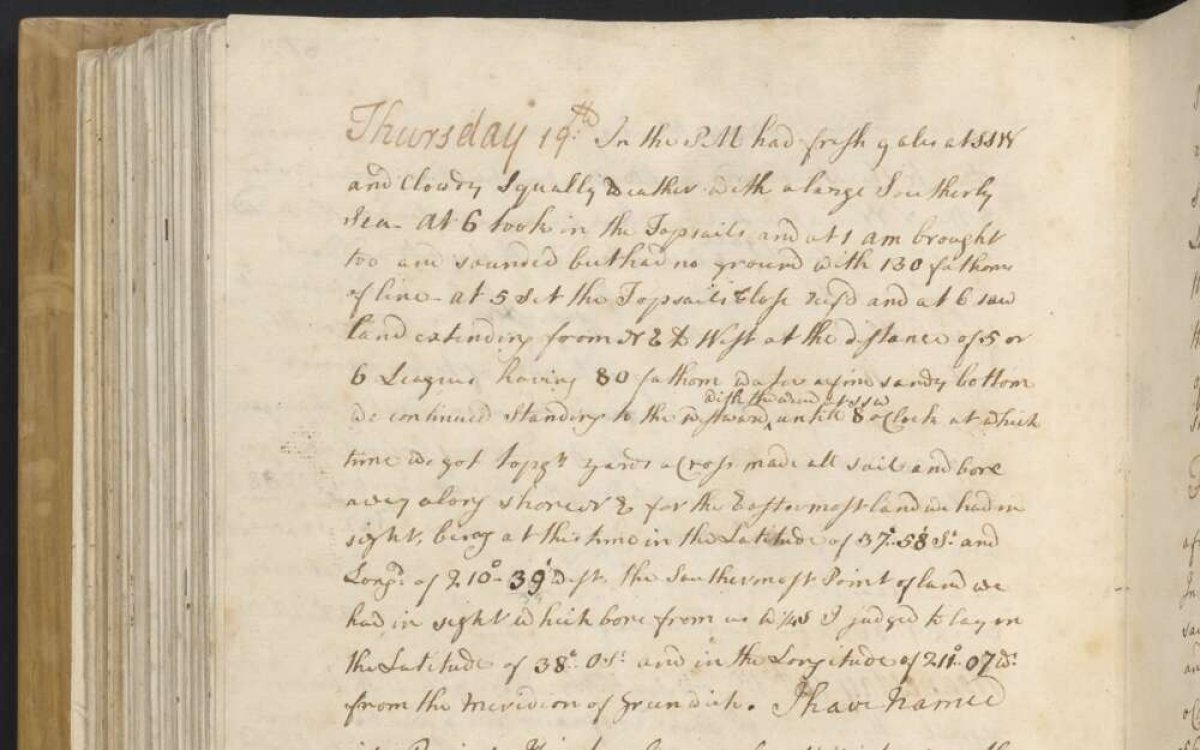
Cook, James, 1728-1779 & Hutchinson, John & Wallis, Samuel, 1728-1795 & Bolckow, Henry William Ferdinand, 1806-1878. (1768). Journal of H.M.S. Endeavour, 1768-1771 [manuscript]. http://nla.gov.au/nla.obj-228958440
19 April 1770—first land sighting
At 5 Set the Topsails Close reef’d and 6 saw land extending from NE to West at the distance of 5 or 6 Leagues having 80 fathom water a fine sandy bottom We continued Standing to the westward with the wind at SSW untill 8 oClock at which time we got topgt yards aCross made all sail, and bore away along shore NE for the Eastermost land we had in sight, being at this time in the Latitude of 37°..58’ So and Longd of 210°..39’ West. the Southermost Point of land we had in sight which bore from us W1/4S I judged to lay in the Latitude of 38°..0’ So and in the Longitude of 211°..07’ Wt from the Meridion of Greenwich. I have named it Point Hicks, because Leuitt Hicks was the first who discover’d this land
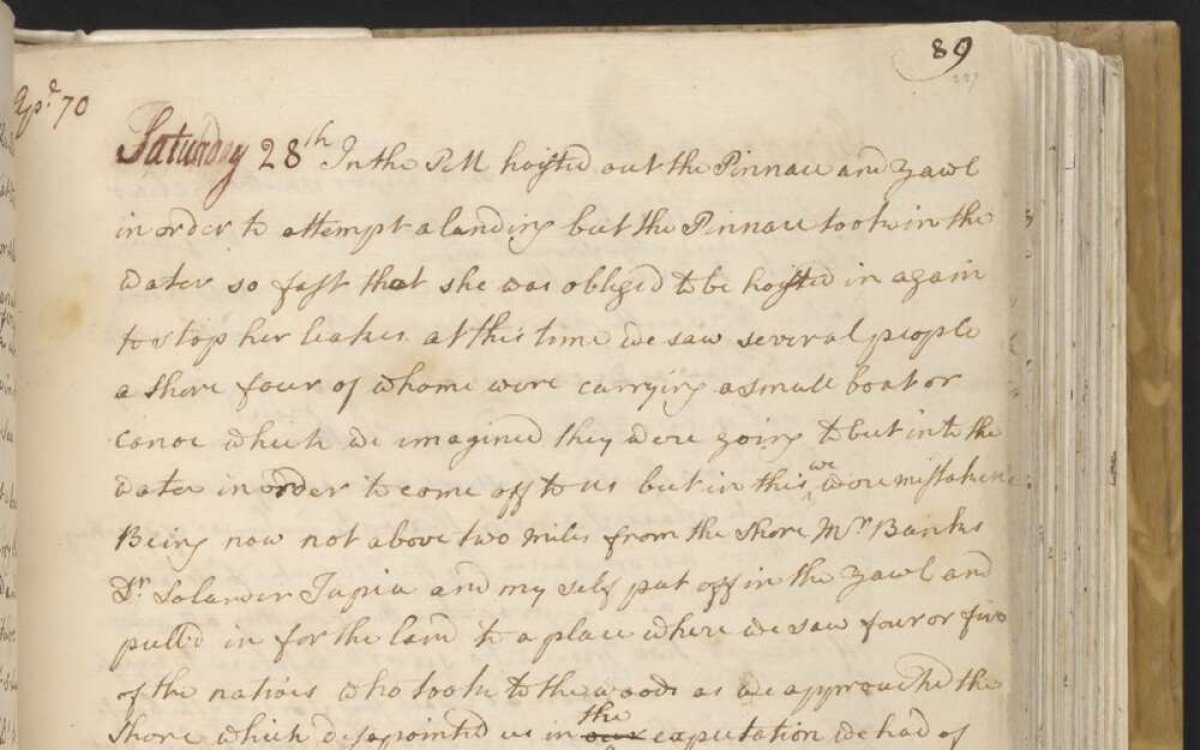
Cook, James, 1728-1779 & Hutchinson, John & Wallis, Samuel, 1728-1795 & Bolckow, Henry William Ferdinand, 1806-1878. (1768). Journal of H.M.S. Endeavour, 1768-1771 [manuscript]. http://nla.gov.au/nla.obj-228958440
28 April 1770—landfall
Saturday 28th In the PM hoisted out the Pinnace and yawl in order to attempt a landing but the Pinnace took in the water so fast that she was obliged to be hoisted in again to stop her leakes - At this time we saw several people a shore four of whome where carrying a small boat or Canoe which we imagined they were going to but into the water in order to come off to us but in this we were mistaken Being now not above two Miles from the Shore Mr Banks Dr Solander Tupia and myself put off in the yawl and pull’d in for the land to a place where we saw four or five of the natives who took to the woods as we approachd the Shore which disapointed us in our the expectation we had of getting a near view of them if not to speak to them but our disapointment was heighten’d when we found that we no where could effect a landing by reason of the great surff which beat every where upon the shore - we saw hauld up upon the beach 3 or 4 small Canoes which to us appear'd not much unlike the small ones of New Zeland, in the woods were several trees of the Palm kind and no under wood and this was all we were able to observe of the country from the boat after which we returnd to the Ship about 5 in the evening
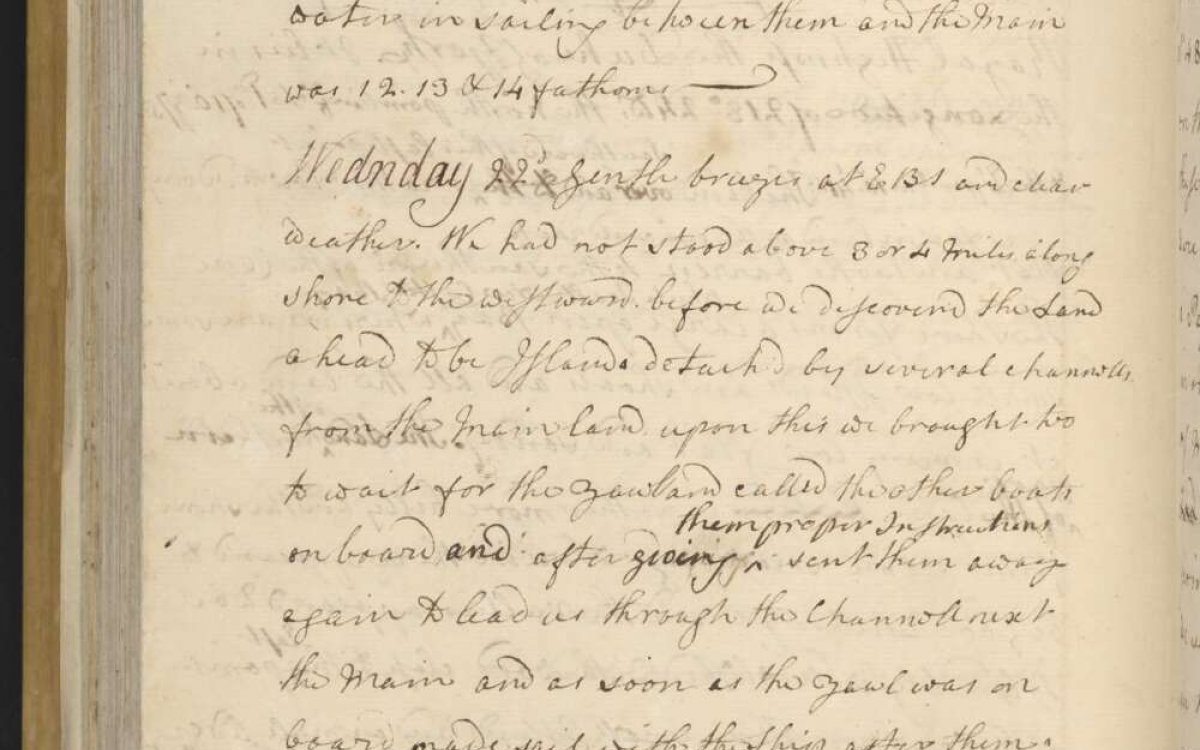
Cook, James, 1728-1779 & Hutchinson, John & Wallis, Samuel, 1728-1795 & Bolckow, Henry William Ferdinand, 1806-1878. (1768). Journal of H.M.S. Endeavour, 1768-1771 [manuscript]. http://nla.gov.au/nla.obj-228958440
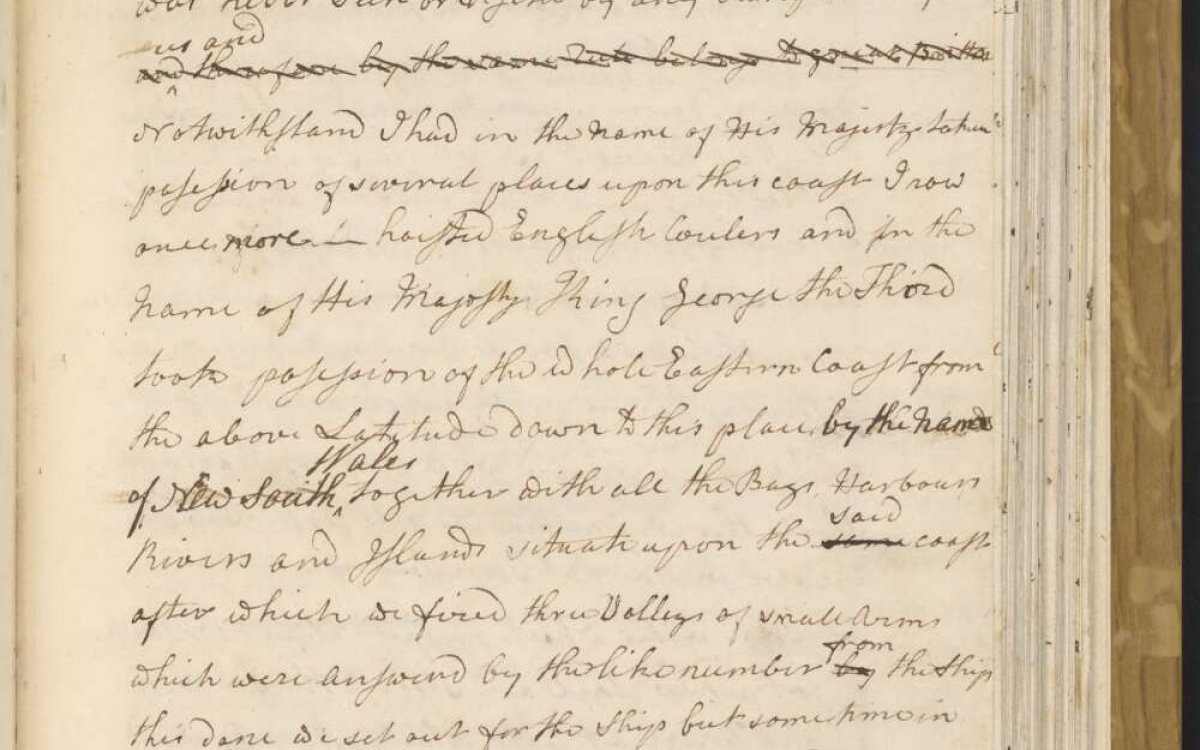
Cook, James, 1728-1779 & Hutchinson, John & Wallis, Samuel, 1728-1795 & Bolckow, Henry William Ferdinand, 1806-1878. (1768). Journal of H.M.S. Endeavour, 1768-1771 [manuscript]. http://nla.gov.au/nla.obj-228958440
22 August 1770—possession
I had in the Name of his Majesty taken posession of several places upon this coast I now once more hoisted English Coulers and in the Name of His Majesty King George the Third took posession of the whole Eastern Coast from the above Latitude down to this place by the Name of New South Wales together with all the Bays, Harbours Rivers and Islands situate upon the same said coast after which we fired three Volleys of small Arms which were Answerd by the like number by from the Ship
Activities
- During the 16th, 17th, 18th and 19th centuries, European nations were competing with each other to extend the reach of their dominions. Raw materials and valuables like gems, gold and silver were highly sought after. Many nations also wanted to extend the reach of their religious ideologies.
- How would spreading religious philosophy to new areas help to achieve a country’s goal of imperial expansion?
- How would spreading religious philosophy to new areas help to achieve a country’s goal of imperial expansion?
- Many Europeans felt it was their mission to bring ‘civilisation’ to people in the lands they explored.
- How do we define civilisation?
- What justification might the people of Europe have used to legitimise their claims?
- Reading Cook’s journal gives us an insight into his thoughts as he sailed up the coast.
- Use the transcript of Cook’s journal to explore more of his writing.
- Find entries in which Cook shares his thoughts about the people they encountered.
